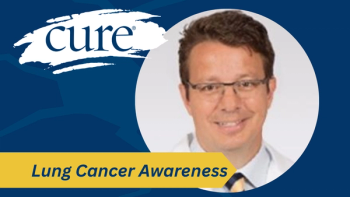
Blood Cancer Expert Talks CAR-T Cell Therapy Risks, Benefits
An FDA committee voted that the benefits of Carvykti outweigh the risks for myeloma treatment, though concerns about secondary malignancies remain.
The Food and Drug Administration’s (FDA) Oncologic Drugs Advisory Committee (ODAC; a panel of experts that reviews the safety and efficacy of cancer treatments) recently voted unanimously that the benefits of treatment with Carvykti (ciltacabtagene autoleucel) outweigh the risks for pretreated relapsed or refractory multiple myeloma.
The panel cited data from the phase 3 CARTITUDE-3 clinical trial, which showed that the CAR-T cell therapy,
However, there has been an increasing amount of concern regarding secondary malignancies — including CAR-positive lymphoma — that are occurring in a small subset of patients who undergo CAR-T cell therapy. In fact, in January 2024, the FDA requested that five out of the six FDA-approved CAR-T cell therapies
READ MORE:
CURE® recently spoke with Dr. Gwen Nichols executive vice president and chief medical officer at The Leukemia & Lymphoma Society (LLS) about the ongoing investigations into CAR-T cell therapy, what patients should know and what questions remain unanswered in this space.
CURE®: What do patients need to know about the evolving data regarding secondary malignancies after CAR-T cell therapy?
Nichols: There have been a small number of secondary malignancy cases reported to the FDA. More may be reported, so it’s impossible to say what the exact risk is, but based on the cases reported so far, it’s about one-tenth of 1%. It is important to put that number in context: Most of the patients treated to date with CAR-T had failed multiple prior lines of cancer therapy. We know that many chemotherapies also carry the risk of secondary malignancies, so it is not clear what added contribution the CAR-T is making to this very small risk. It is also too early to know if these cancers, if connected to treatment at all, are connected to only some or all available CAR-T cell therapies. As of now, there’s no indication that any CAR-T product carries more or less risk than any other.
Should patients be apprehensive about undergoing these kinds of treatments?
Most patients with blood cancer who receive CAR-T cell therapies are facing poor prognoses and may have few, if any, other suitable treatment options. CAR-T is very effective against many types of blood cancer, even when other treatments have stopped working, and has even led to apparent cures for some patients whose cancer would have otherwise been terminal.
CAR-T does hold risks and patients should get all the information they need before deciding to proceed with CAR-T.
LLS does not recommend specific blood cancer treatments. However, patients considering CAR-T cell treatment are advised to raise any concerns with their cancer treatment team.
Is it potential for more FDA approvals of CAR-T cell therapies to be delayed or denied because of this?
There are many ongoing trials of CAR-T cell therapy for malignant and non-malignant conditions. There are also studies testing CAR-T cell therapy in earlier lines of blood cancer treatment. The FDA will be weighing the risks and benefits of CAR-T in each instance and base approvals on the data available. The current risk of secondary malignancies has been deemed to be a minor risk compared to the benefit for patients with multiply relapsed blood cancers. This will be an ongoing process of evaluation.
What are the potential risks and benefits of moving CAR-T cell therapy up to earlier lines of treatment, especially considering the risk for secondary cancers?
While the current risk of secondary malignancy is very low, we do not know if that risk will increase or decrease when CAR-T is given to patients who are earlier in their treatment.
On one hand, they will be less likely to have chemotherapy-induced secondary malignancy and complications/side effects of prior treatment. They will likely be healthier, and more patients may be able to take advantage of CAR-T.
However, when CAR-T is not the only option for treatment, safety becomes an even more important concern, and this will be an ongoing discussion of the data from clinical trials moving CAR-T earlier in treatment. This will also be critical for understanding the use of CAR-T for non-malignant conditions.
What unanswered questions remain in this space?
Several questions remain to be answered as we are still in the infancy stages of CAR-T cell therapy, with the first approval happening just seven years ago. Over time, we aim to answer why certain patients’ disease responds to CAR-T while others don’t. We haven’t used CAR-T long enough to know about its long-term effects on health including things like immune health and fertility. To understand this fully we will need long-term follow-up from clinical trials.
What do you hope to see or predict for CAR-T cell therapy in the next five or 10 years?
One of the most important aspects of CAR-T cell therapy is that it is not currently available to many patients who could benefit from its use. The process is cumbersome, expensive and only available at major cancer centers. The Leukemia & Lymphoma Society is supporting research to look at ways to make CAR-T more accessible to those who could benefit from it including research to make the therapy easier to produce, safer to administer at more sites of care, and we are fighting for appropriate coverage for patients to receive this therapy when suggested by their care team. We also provide financial support to patients to be able to travel to be evaluated for this treatment. I hope to see it become more accessible and less expensive so more people can benefit.
This transcription was edited for clarity and conciseness.
For more news on cancer updates, research and education, don’t forget to





